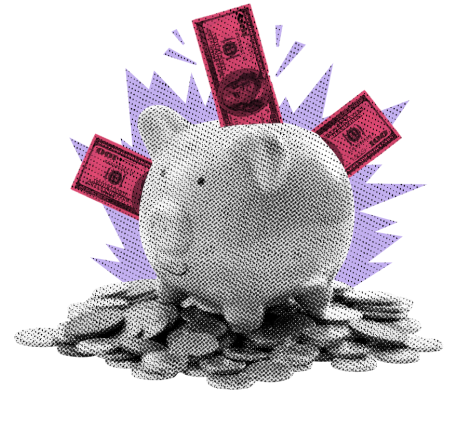
Why Powell may have no choice but to cut rates--even if inflation lingers.
KEY TAKEAWAYS
-
The Fed’s job looks simple but the dual mandate creates conflict
-
Raising rates kills inflation but destroys jobs
-
The Phillips Curve explains the wage-inflation link
-
Powell hinted at shifting focus toward jobs at Jackson Hole
-
Tariffs create inflation the Fed can’t fix with rates
MY HOT TAKES
-
The Fed’s “simple” job is a tragic trade-off in disguise
-
Interest rates are a blunt, draconian tool to fight inflation
-
Powell finally admitted jobs are at risk–and markets should listen
-
Tariff-driven inflation exposes the Fed’s limits
-
Central bankers are destined to be unpopular no matter what
-
You can quote me: “Being a central banker means everyone is going to hate you.”
Say YES under duress. Is your job simple? Mine certainly is not, and I suspect, yours is not either. But the Fed–you know, the most powerful independent institution in the world–it, has a simple job. Imagine the job listing. Title: Central Bank Policy Maker. Requirements: lots of education from top institutions, academic papers with centrist views, at least one academic paper with controversial views not circulated for many years, experience at a central bank–could be junior, political connections not required but preferred. Job requirements: price stability & maximum employment [THIS SECTION INTENTIONALLY LEFT BLANK]. 🤣 That’s right, it’s that simple; just 5 words.
Of course, we know that it is not that simple, this so-called dual mandate. Price stability, or managing inflation, is kind of the FOMC’s original goal. That one is super easy. If inflation gets out of hand, simply blow up the economy. In a blown-up economy, folks will be jobless and the ones that aren’t are so fearful, that they simply stop consuming. By doing so, demand sinks and prices decline. Basic economics.
How do you blow up the economy? Well, it’s simple. Raise interest rates so that goods and services cost consumers EVEN MORE MONEY, to the point where they refuse to consume. Think about how much more money the same monthly car loan payment, credit card payment, or monthly mortgage payment is now versus in 2021. You certainly get less bang for your monthly payment buck. You’re probably thinking “wait, what–isn’t the Fed’s job to get prices lower, not make them higher?” You’re right, but sometimes, you have to step back before you step forward… I guess. And we know it works.
You know what else works? Messing with consumers’ source of income. As I said above, nobody wants to spend money when they are worried about being unemployed; certainly not if one is actually unemployed. So how can the central bank engineer that? Well, most companies rely on credit to keep their business flowing. They borrow money for big capital projects, sure, and if that borrowing is more costly, corporations–which are rational–will cut back on capital spending. Oh, and even more importantly, companies rely on revolving trade credit to keep their businesses flowing–receivables and payables. Interest rates can and do have a material impact on the cost of business as usual for most companies, and when they go up, rational companies cut back.
So, borrowing, the lifeblood of most companies gets more expensive, and sales decline because consumer borrowing is more expensive, companies are faced with a big challenge. How to maintain margins and keep shareholders happy. That seems like a challenge for the accounting department. More sales would be good, but in a high interest rate environment, companies are forced to focus on cost minimization. Companies have two types of costs: fixed costs and variable costs. Fixed costs are things like factory and office rent. Variable costs are like company picnics, travel, marketing, and…wait… wait, the ultimate variable cost is… employment. AHA!
Companies simply cut back on employees, first by stopping the hiring process and allowing natural attrition to do its job, but then ultimately through layoffs. The sad reality is that laying off employees is the easiest and most effective way to cut costs and maintain profitability. Employees can always be rehired when things get better–at least in a simple world. All of this maneuvering was caused by the Fed raising interest rates. I am sorry to say, my friends, THAT IS HOW IT WORKS. Draconian? Indeed. Effective? Very much so.
So, you can see that if the Fed’s only job was to quash inflation, it would be really simple. To be clear, employment was long part of the Fed’s mandate, going back to the 1946 Employment Act. But it really became a job requirement in 1977 when Congress passed the Federal Reserve Reform Act. That is where stuff got tricky and sticky. As you have just seen, there is a trade off between unemployment and low inflation. I want to just clarify, before we keep going, that the relationship is a bit more complicated than I have detailed, but the basics are there: high unemployment is inversely related to inflation.
Wait, let’s take a step back. What causes inflation in the first place? Central bankers all started their lives studying the Phillips Curve. The Phillips Curve originated in 1958 when economist A.W. Phillips studied nearly a century of U.K. data and found an inverse relationship between unemployment and wage growth. His work showed that when unemployment was low, wages tended to rise quickly, and when unemployment was high, wages rose slowly or even fell. By the way, wage growth also puts pressure on corporate profits, which causes companies to raise consumer prices–likely a cause of the inflation in the first place. Later, more well-known economists like Samuelson and Solow extended this idea to suggest a broader tradeoff between unemployment and inflation. Yes, it is a bit abstract, but it is a basically understood tenet by central bankers as being a primary catalyst of inflation.
So it's all very clear. Tight labor markets, meaning low unemployment, causes wages to rise which causes inflation. Force high unemployment and that pressure goes away because there are lots of desperate folks looking to fill jobs and demand for goods is lower. This causes inflation to recede. But alas, there is a problem, because the central banks can’t accomplish mandate 1 without destroying mandate 2.
This is very much the challenge that today’s Fed is facing. The US is experiencing above-target inflation. Part of that inflation is still an aberration from the pandemic, though that is fading, albeit slowly. New inflation is creeping up as a result of tariffs, specifically in core goods. It is not high yet, and it is unclear if it will persist, but the trend is heading in the wrong direction. Mandate 1 bells are ringing.
The easy fix is to keep interest rates restrictive where they are right now. But there is a problem. Mandate 2 bells are starting to ring as well. The US just had 3 lousy employment months and there is evidence that the trend may continue, with weekly unemployment claims rising, trending higher.
So, the Fed is faced with its classic dilemma. In game theory, we call this the “tragic trade-off.” You may have heard of “The Prisoner’s Dilemma," or “Sophie’s Choice,” where the player must choose the least worst solution. The Fed, now facing the potential for economic calamity caused by rising unemployment, must choose whether to treat the malady with lower interest rates but risk allowing inflation to pick up further. It is clear, based on recent Fed-speak and FOMC minutes that a majority of FOMC members have chosen inflation as the least worst solution allowing employment to weaken. HOWEVER, last Friday, Fed Chairman Jerome Powell said in his Jackson Hole keynote, that a “shifting balance of risks may warrant adjusting our policy stance.” That is code for, “we are concerned about unemployment picking up,” mandate 2.
Now, I have to admit, I was a bit surprised that the Chair mentioned it at Jackson Hole given that he must first sway a majority of his FOMC committee to vote for further rate cuts, and that next meeting is still a month or so away with several key data points in the interim. I said as much in a CNBC interview just last Friday before his speech. Perhaps, Powell finally came to his conclusion after realizing that high interest rates have absolutely no power over any inflationary forces that may be caused by tariffs, something I have also been saying quite a bit as well.
It is indeed a dilemma for the Fed, that is under intense scrutiny by the administration and the markets. It turns out that the role of central banker is not as easy as it may appear on the job listing. One thing is clear: being a central banker means somebody is always going to dislike you.
Send applications to: The President of the United States.
FRIDAY’S MARKETS
Stocks soared on Friday after Chairman Jerome Powell hinted that further interest rate cuts may be coming soon. It was not expected, it may not even be necessary, but it was certainly appreciated by markets in need of some happy-fuel to power indexes higher after recent pullbacks. Treasury yields declined and Fed Funds futures increased probabilities of a September cut to 85%.

NEXT UP
-
New Home Sales (July) are expected to have climbed by 0.5% after gaining by 0.6% in June.
-
Later in the week we have some really important earnings announcements in addition to more housing numbers, Durable Goods Orders, Consumer Confidence, GDP, Personal Spending, Personal Income, PCE Price Index, and University of Michigan Sentiment. Download the attached economic and earnings calendars to be the most well-informed person in your yoga class.
DOWNLOAD MY DAILY CHARTBOOK HERE 📈
.png)

